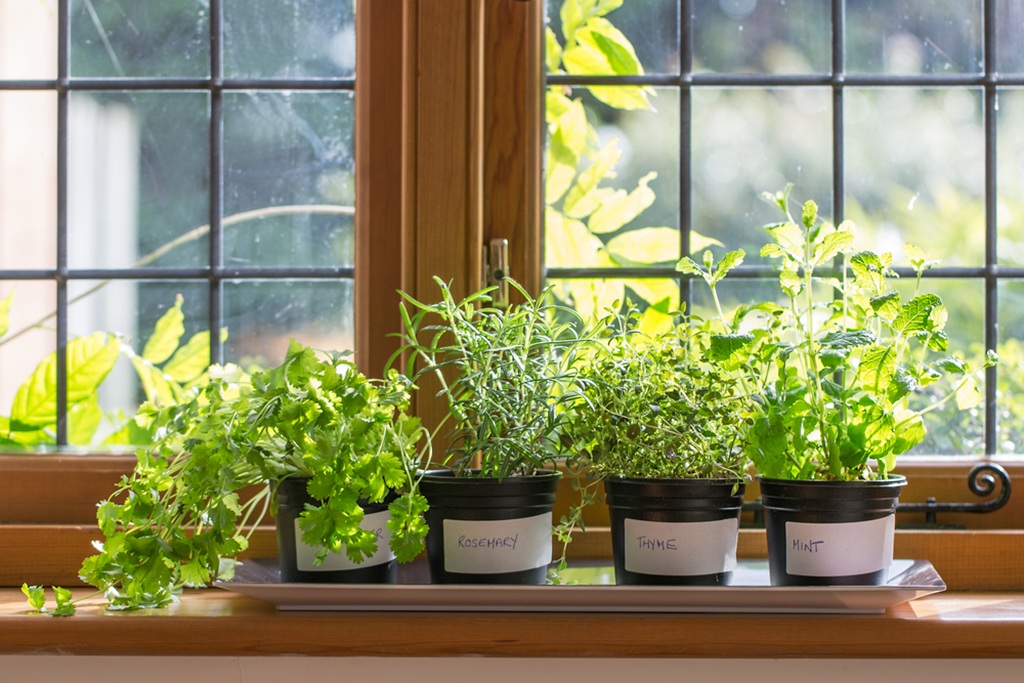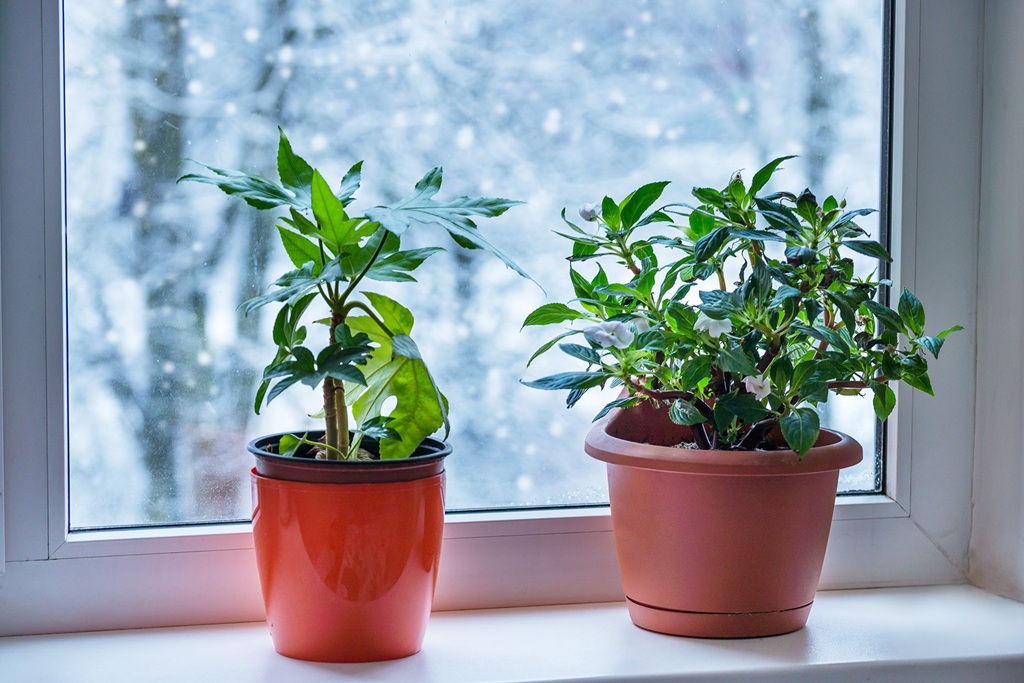The days are shorter, the air is crisp, and the world outside is slumbering under a blanket of frost. But that doesn’t mean your gardening aspirations need to hibernate too! Winter is the perfect time to embrace the joy of windowsill gardening, bringing the vibrant hues and fresh flavors of nature indoors. With a little creativity and care, you can transform your windowsill into a thriving oasis, bursting with life and culinary delights, even when the snow is falling outside.
Why Windowsill Gardening in Winter?
Beyond the sheer delight of nurturing life during the dormant months, windowsill gardening offers a multitude of benefits:
- Fresh Herbs and Produce Year-Round: Imagine snipping fresh basil for your pasta sauce or adding homegrown chives to your baked potato in the middle of winter. Windowsill gardening allows you to enjoy the flavors of your favorite herbs and vegetables regardless of the season.
- Boost Your Mood and Well-being: Studies have shown that gardening can reduce stress, improve mental health, and even boost your immune system. Tending to your windowsill garden provides a welcome connection to nature, offering a sense of calm and accomplishment during the often dreary winter months.
- Purify Your Indoor Air: Plants act as natural air filters, absorbing toxins and releasing oxygen. Creating a mini indoor garden on your windowsill can contribute to a healthier and more refreshing home environment.
- Brighten Your Home: A splash of green can instantly enliven any space. A windowsill garden adds a touch of natural beauty and vibrancy to your home, combating the winter blues with a burst of color and life.
Choosing the Right Plants
The key to successful windowsill gardening lies in selecting plants that thrive in indoor conditions and can tolerate the lower light levels and cooler temperatures of winter.
Here are some excellent choices:
- Herbs: Many culinary herbs, such as basil, parsley, chives, oregano, and mint, adapt well to indoor growing. They prefer sunny locations and well-drained soil.
- Leafy Greens: Spinach, lettuce, kale, and arugula can all be successfully grown on a sunny windowsill. These fast-growing greens provide a continuous supply of fresh salad ingredients throughout the winter.
- Vegetables: Dwarf bell peppers, chili peppers, and even compact tomato varieties can thrive in a sunny windowsill garden. These vegetables require more space and sunlight but offer the reward of homegrown produce.
- Flowers: Add a touch of color and fragrance to your indoor space with winter-blooming flowers like African violets, cyclamen, or amaryllis. These plants prefer bright, indirect light and cooler temperatures.
Creating the Perfect Windowsill Garden
Transforming your windowsill into a thriving garden involves a few essential steps:
- Assess Your Sunlight: Observe how much sunlight your chosen windowsill receives throughout the day. South-facing windows generally offer the most light, while north-facing windows receive the least. Choose plants that match the light conditions of your windowsill.
- Select the Right Containers: Opt for containers with drainage holes to prevent overwatering. The size of the container will depend on the type of plant you’re growing. Herbs and leafy greens can thrive in smaller pots, while vegetables require larger containers.
- Use Quality Potting Mix: Invest in a good quality potting mix that is specifically formulated for indoor container gardening. This will provide your plants with the necessary nutrients and drainage.
- Start with Seeds or Seedlings: You can start your windowsill garden from seeds or purchase seedlings from a local nursery. Starting from seeds offers a greater sense of accomplishment but requires more time and patience.
- Water Wisely: Overwatering is a common mistake in indoor gardening. Allow the top inch of soil to dry out between waterings, and ensure excess water can drain freely from the container.
- Provide Adequate Humidity: Indoor air can be dry, especially during the winter months. Mist your plants regularly or place a tray of water near your windowsill to increase humidity.
- Fertilize Regularly: Indoor plants require regular fertilization to replenish nutrients in the potting mix. Use a balanced liquid fertilizer every few weeks during the growing season.
Tips for Success

- Rotate Your Plants: To ensure even growth, rotate your plants regularly so that all sides receive adequate sunlight.
- Pinch and Prune: Pinch back the growing tips of herbs and leafy greens to encourage bushier growth. Prune any leggy or overgrown stems to maintain a healthy shape.
- Monitor for Pests: Keep an eye out for common indoor pests like aphids, spider mites, and whiteflies. If you notice any infestations, treat them promptly with insecticidal soap or neem oil.
- Group Plants Together: Grouping plants together can create a microclimate that increases humidity and promotes healthy growth.
- Enjoy the Process: Windowsill gardening is a rewarding and therapeutic activity. Take the time to observe your plants, appreciate their growth, and savor the fruits (and vegetables!) of your labor.
Related: Timing Matters: When to Plant Crops for Maximum Yield
Reviews
“I never thought I could grow anything indoors, but my windowsill garden is thriving! I have fresh basil and parsley all winter long. It’s so satisfying to cook with my own homegrown herbs.” – Maria G.
“Windowsill gardening has been a lifesaver during the winter months. It’s a great way to bring a touch of nature indoors and boost my mood. I highly recommend it to anyone who wants to enjoy fresh produce year-round.” – John S.
“I was skeptical at first, but my windowsill garden has exceeded my expectations. I’m amazed at how much I can grow in such a small space. It’s a fun and rewarding hobby that I can enjoy even when it’s cold outside.” – Sarah L.
FAQ
Q: What is the best windowsill for growing plants?
A: South-facing windows are generally the best for growing indoor plants as they receive the most sunlight. However, many plants can thrive in east- or west-facing windows as well. North-facing windows receive the least amount of light and are best suited for low-light plants.
Q: How often should I water my windowsill garden?
A: The frequency of watering will depend on several factors, including the type of plant, the size of the container, and the temperature and humidity of your home. As a general rule, allow the top inch of soil to dry out between waterings.
Q: What are some common problems with windowsill gardening?
A: Overwatering, insufficient light, and pest infestations are some common problems encountered in windowsill gardening. It’s important to choose the right plants for your windowsill, monitor your plants regularly, and address any issues promptly.
Q: Can I grow vegetables on a windowsill?
A: Yes, you can grow a variety of vegetables on a windowsill, including dwarf bell peppers, chili peppers, and compact tomato varieties. These plants require more space and sunlight than herbs or leafy greens.
Q: What are some good resources for learning more about windowsill gardening?
A: There are many excellent resources available for learning more about windowsill gardening, including books, websites, and online forums. Your local library or garden center can also provide helpful information and advice.
Embrace the Winter Gardening Journey
Windowsill gardening in winter is a delightful way to connect with nature, cultivate fresh produce, and enhance your well-being during the colder months. With a little planning and care, you can transform your windowsill into a thriving indoor oasis, bringing life, color, and flavor to your home all season long.




